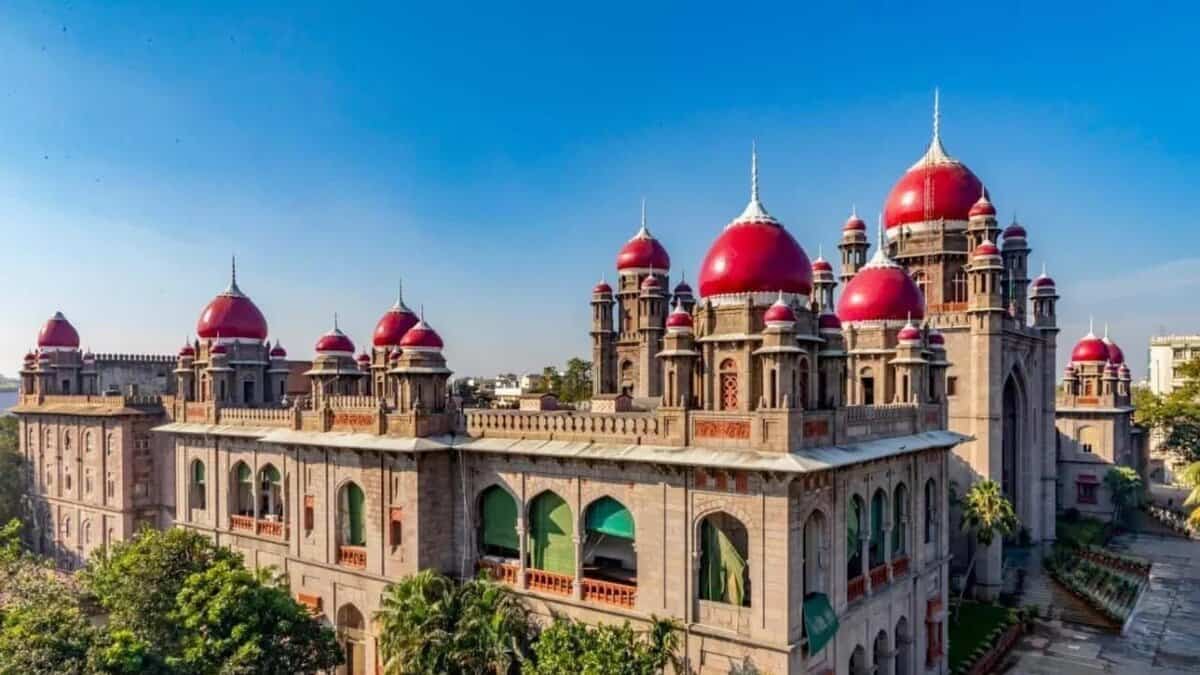
Hyderabad: The Telangana High Court has raised serious concerns about rampant urbanisation around Hyderabad’s key water bodies, Osman Sagar and Himayat Sagar, and has sought explanations from senior government officials regarding the proliferation of large-scale constructions in these eco-sensitive areas.
This action follows a Public Interest Litigation (PIL) highlighting the construction of multiple convention halls within the catchment zones of the twin reservoirs, despite explicit prohibitory orders under Government Order (GO) 111.
Court’s notices to govt depts
The court has issued notices to the state government, the irrigation and municipal administration departments, the Pollution Control Board, and the owners of five convention centres, demanding their responses within four weeks.
GO 111, which has been in effect since 1996, prohibits any concrete construction within a 10-kilometre radius of Osman Sagar and Himayat Sagar.
The order was enacted to protect these reservoirs and their surrounding environment by designating the area as a bio-conservation zone.
The intention is to prevent pollution and ecological degradation that could arise from unchecked development, particularly from large-scale commercial and residential projects.
PIL questions state’s failure
The PIL, filed by Mandadi Madhava Reddy from Moinabad mandal in Rangareddy district, questions the state’s failure to enforce these environmental protections.
The petitioner’s counsel, P Sasidhar Reddy, told the court that five large convention centres have already been constructed in Janwada, within the restricted zone, with more developments underway.
He argued that each convention hall can accommodate up to 5,000 people, leading to the generation of vast amounts of waste and sewage that ultimately end up in the lakes.
The counsel also pointed out that increased traffic and large crowds contribute to air and water pollution, as well as traffic congestion in the area.
Further, the petitioner highlighted that these constructions, with their extensive compound walls, have replaced significant green cover with concrete, disrupting the natural flow of water and accelerating ecological damage.
The government was also criticised for its alleged failure to enforce environmental norms, with the petitioner claiming that even HYDRAA, the specialised agency created to protect the lakes, has been unable to curb the illegal construction activity within the bio-conservation zone.
Taking note of these concerns, the High Court has directed all relevant government departments and the private parties involved to submit their explanations within four weeks.
HC stresses on GO 111’s implementation
The bench, comprising Acting Chief Justice Sujoy Paul and Justice Renuka Yara, emphasised the importance of strict enforcement of GO 111 and indicated that it may consider appointing an expert committee or Advocate Commissioner to assess the extent of encroachment and ecological damage.
The case has been adjourned for further hearing, with the court underscoring that the protection of Hyderabad’s water bodies and their catchment areas remains a legal and environmental priority.



